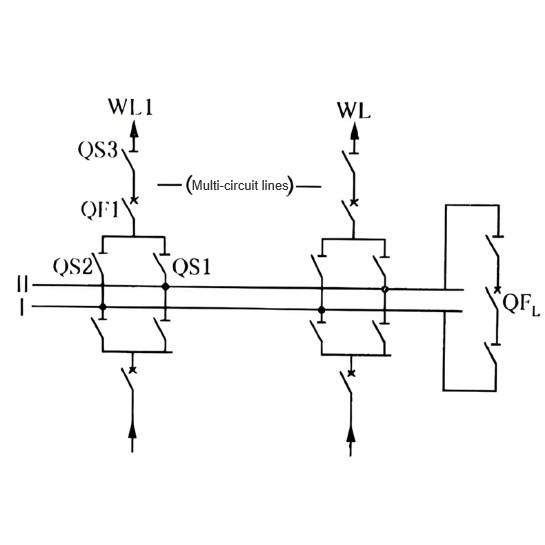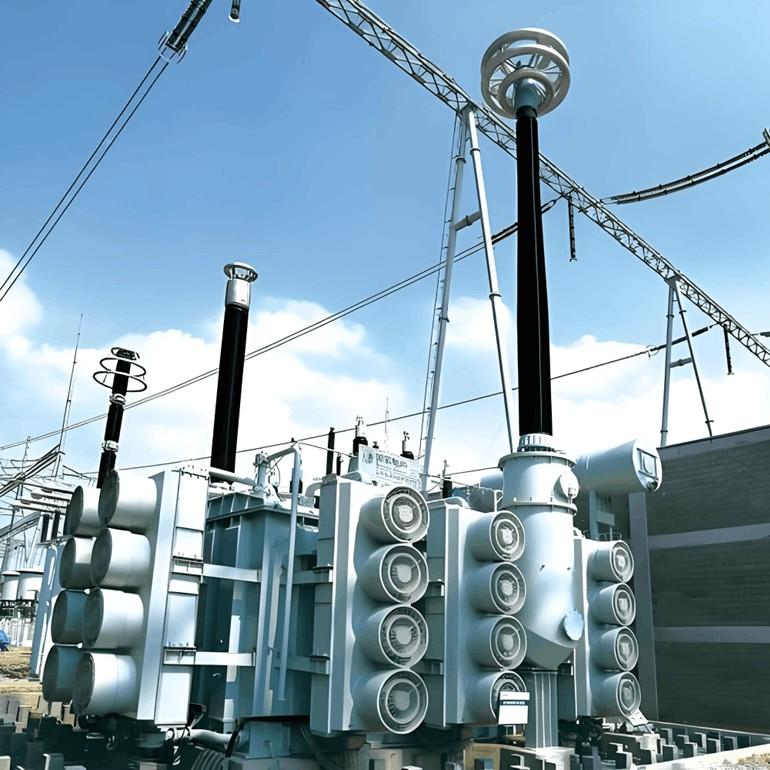Currently, traditional-type breathers are widely used in transformers. The moisture-absorbing capability of silica gel is still judged by operation and maintenance personnel through visual observation of the color change of silica gel beads. Subjective judgment by personnel plays a decisive role. Although it has been clearly stipulated that silica gel in transformer breathers should be replaced when more than two-thirds of it changes color, there is still no accurate quantitative method to determine how much the adsorption capacity decreases at specific stages of color change.
Moreover, the skill levels of operation and maintenance personnel vary significantly, leading to large discrepancies in visual identification. Some manufacturers and individuals have conducted related research, such as detecting moisture content in air after silica gel filtration or performing real-time weight monitoring of silica gel. Embedded computers are used for control, detection, and data transmission to automatically control heating and remove moisture from the silica gel.
1.Analysis of Current Technical Status
1.1 Research on Transformer Breathers by Foreign Institutions
For many years, based on academic research and practical applications abroad, detecting the moisture content in air after silica gel absorption has been considered the most common, widespread, and effective method to assess the saturation level of silica gel. However, this method still cannot directly quantify the moisture saturation of silica gel; it only qualitatively indicates—through indirect means—that the adsorption capacity has declined and dehydration treatment is needed.
MR Company currently offers a similar product addressing this issue, using humidity-sensing principles to evaluate the dampness level of silica gel, employing white silica gel (non-indicating type). Its drawbacks include: humidity sensors tend to fail when exposed to saturated humidity (condensation into water droplets), white silica gel does not allow users to visually confirm its moisture-absorbing effect, and the dehydration/regeneration process cannot be verified.
ABB also offers a similar solution featuring a dual-tube structure. During operation, an electromagnetic valve connects one tube to the conservator’s breathing channel while the other undergoes dehydration and regeneration. However, due to its large size, heavy weight, and high cost, it is unsuitable for retrofitting existing conventional breathers on-site.
1.2 Research on Transformer Breathers by Domestic Institutions
Some domestic enterprises have developed maintenance-free breathers. These devices use online weighing measurements to establish models of silica gel moisture saturation and time-based heating dehydration. Applying fuzzy control theory, they achieve ideal air drying and scientific dehydration. To ensure the breather accessories match the transformer’s service life, ruggedized military-grade microprocessors and the VxWorks operating system are employed, along with highly stable sensing and actuation components. This truly realizes maintenance-free operation for transformer breathers, significantly improving on-site work efficiency and safety, and enhancing the reliability of power supply systems.
1.3 Two Existing Viewpoints on Replacing Traditional Breathers
There is currently no unified consensus within the power industry regarding the impact of replacing silica gel in main transformer breathers on Buchholz (gas) protection. While it is generally agreed that during silica gel replacement, the heavy-gas protection must be switched from “trip” to “alarm” mode, significant disagreement exists about how to reconfigure the protection after replacement.
One view holds that replacing the breather’s silica gel may cause false tripping of the gas protection; therefore, after replacement, the transformer should undergo 24 hours of trial operation (with heavy-gas protection set to alarm) before switching back to trip mode.
The other view argues that once silica gel replacement is complete, there is no further impact on heavy-gas protection, so the protection should be immediately restored to trip mode.
Currently, a certain power supply company adopts the following procedure: before replacement, they request dispatch approval to switch the heavy-gas protection link from trip to signal mode; after completion, they request dispatch approval again to restore it to trip mode. They verify that one terminal of the heavy-gas protection link carries –110V while the other is voltage-free before re-engaging the link.
1.4 Current Application Status of Transformer Breathers
The power supply company currently uses two types of breathers: detachable organic glass canisters and non-detachable canisters. For detachable breathers, the replacement process demands high precision from operators regarding procedures and screw torque; otherwise, the organic glass is easily damaged. The entire process is time-consuming, and repeated replacements often lead to poor sealing at joints, allowing unfiltered moist air to enter the conservator and potentially cause transformer oil moisture ingress.
Non-detachable breathers avoid these issues but present another problem: the small filling opening causes silica gel spillage during replacement, polluting the environment.
Among the company’s 64 substations, silica gel was replaced 178 times in 2015, totaling 541 kg. Replacement frequency increases significantly during the rainy season due to high humidity, requiring substantial manpower and material resources. In mountainous areas, risks such as road collapses and rockfalls during the rainy season further increase transportation hazards.
2. Working Principle of Maintenance-Free Transformer Breathers
The JY-MXS series maintenance-free breather is installed on the conservator of oil-immersed transformers. When transformer oil expands or contracts due to load or ambient temperature changes, gas in the conservator passes through the desiccant inside the maintenance-free breather, removing dust and moisture from the air to maintain the insulation strength of the transformer oil.
After prolonged use, when the desiccant becomes damp, the breather automatically activates its heating function to remove moisture. The system mainly consists of a filter canister, glass tube, main shaft, load cell (weight sensor), temperature/humidity sensors, heating element, control board, and silica gel.
When the conservator inhales air, it first passes through a sintered metal filter mesh that removes dust. The filtered air then flows through the drying chamber, where moisture is fully absorbed by the desiccant.
The moisture saturation level of the silica gel is measured by a load cell installed inside the breather. When saturation exceeds a preset threshold, carbon fiber heating elements inside the drying chamber activate to dry the desiccant. The resulting steam diffuses outward via convection, passes through the metal mesh, condenses on the glass tube, and flows down to a metal flange at the bottom, exiting the breather.
If the humidity sensor fails, a timer controller inside the control box ensures periodic heating at preset intervals, achieving true maintenance-free operation.
3. Application of Maintenance-Free Transformer Breathers
The power supply company installed JY-MXS series maintenance-free breathers on the on-load tap changers (OLTC) and main bodies of No. 1 main transformers at two geographically distinct 110 kV substations (Substation A and Substation B).
After more than one year of operation:
At Substation A, No. 1 main transformer required zero silica gel replacements for both OLTC and main body breathers. In contrast, No. 2 main transformer underwent 5 main-body breather replacements (15 kg total) and 6 OLTC breather replacements (6 kg total).
At Substation B, No. 1 main transformer also required zero replacements. No. 2 main transformer had 3 main-body replacements (9 kg) and 5 OLTC replacements (5 kg).
Operational data and spot checks show that all functions of the maintenance-free breathers operated normally. When silica gel reached a certain saturation level, the heater promptly activated based on sensor signals to dry the beads. Furthermore, by analyzing six months of historical weight data, the controller established a moisture absorption pattern and implemented a hybrid strategy combining weight-based and timed control, reducing staff workload, enhancing automation, and delivering economic and social benefits.
4. Conclusion
In summary, installing maintenance-free breathers on both the on-load tap changer and main body of transformers in substations enables:
Sensor-driven heating to dehumidify saturated silica gel,
Remote real-time monitoring via communication functions,
Self-diagnostic capabilities for easier maintenance.
These features demonstrate that maintenance-free breathers can fully replace traditional systems, effectively solving transformer moisture absorption needs and achieving true maintenance-free operation. Moreover, since silica gel replacement is eliminated, the long-standing debate over post-replacement heavy-gas protection settings is resolved.
Using maintenance-free breathers allows the power supply company to monitor accessory conditions online, obtain real-time equipment status, and implement preventive measures before failures occur—preventing transformers from operating under full load while hidden risks exist. This fills the gap left by traditional breathers’ inability to support online monitoring.
Additionally, it drastically reduces labor costs and routine inspection expenses, promotes waste recycling, and mitigates the risk of major accidents caused by minor accessory failures. This enables more effective, scientific scheduling of maintenance activities, eliminates unnecessary expenditures, ensures sustainable and safe transformer operation, and ultimately achieves goals of increased productivity, efficiency, safety, and environmental protection.


























